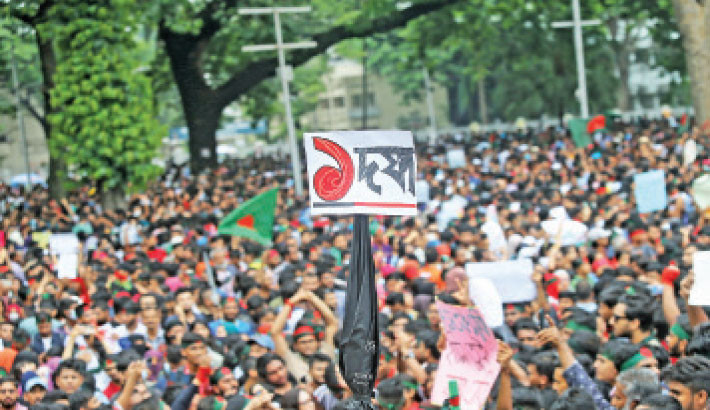OPINION
Hasina failed to understand the silent anger of countrymen
Altaf Parvez
Published: 05 Aug 2025

Sheikh Hasina left options for democracy. She just shattered the electoral system. Elections alone do not constitute democracy, but they are a vital prerequisite for democratic practice. In 2014 parliamentary election, some 151 candidates were elected unopposed. In 2018, votes were cast during the night, and in 2024, opposition parties were not given the chance to participate. Taking advantage of this, Sheikh Hasina carried out significant infrastructural developments, though there are serious allegations of corruption in many of these projects. Moreover, incidents of human rights violations with the support of state agencies rendered the country a dysfunctional state. As a result, corruption, bank looting, enforced disappearances, and extrajudicial killings created a situation in which there appeared to be no accountability at all. Together, these factors generated serious dissatisfaction among the people.
Regarding the July uprising, it unfolded in three specific phases. The first includes all earlier movements – the trade union movement, the peasant movement, the road safety movement, the 2018 quota reform movement, and the protest against the imposition of VAT on tuition fees. Some wish to overlook this phase, but that should not be the case. The government suppressed all these movements, yet none were permanently erased. The seeds of subsequent movements or uprisings were planted during this time. These simmered beneath the surface, alongside the people’s frustration and anger, waiting for an outlet.
The second phase of the movement continued until 14 July. Until then, it was a protest demanding reform of the public sector quota system. But from 15 July, the movement changed course, aiming for the ousting of the government. Sheikh Hasina embodied a system that concentrates power in a single individual. In the current state structure, our prime ministers are like gods – they can do whatever they please and are not held accountable to anyone. This centralisation of power led her to overlook the growing public discontent. Furthermore, India strongly backed Sheikh Hasina. The way she was indulged by them made her even more authoritarian. With the support of both local and international forces, she focused solely on subduing the opposition. She believed BNP, Jamaat, or other left- and right-wing political parties were her primary adversaries. But she failed to understand that the majority of the population was disturbed by her tyrannical rule. Those tasked with informing her about the ground reality either failed to comprehend it or chose not to report it to her. Ultimately, however, she alone was responsible for the situation. The state is an autonomous entity. It has various organs – armed forces, police, civil bureaucracy, universities, and the media. When the state is exposed before the people and loses its legitimacy, these organs are also placed in jeopardy. They see the public awakening and recognise a serious existential crisis. At that point, they seek compromise with the people to safeguard their own survival. In a densely populated country like Bangladesh, it is possible for members of the same family to play different roles during an uprising – one may be involved in the protests while another works in the Army, police, or civil service. This interconnectedness can influence the state apparatus. I recall that during the 1990 uprising, the Army initially supported HM Ershad. But eventually, the then Army chief, General Nuruddin, declared “enough is enough,” and Ershad’s autocratic rule came to an end. This time, we heard that the army decided not to fire on innocent people. The Army belongs to this country. It questioned: why should I act against the people? If I do so, it may worsen my own crisis. Instead, I need to make some adjustments if I want to preserve my power under the old system. And I may have to sacrifice someone if necessary. That, perhaps, was the most crucial moment of the uprising.
__________________________
The writer is a researcher on the history of South Asia

